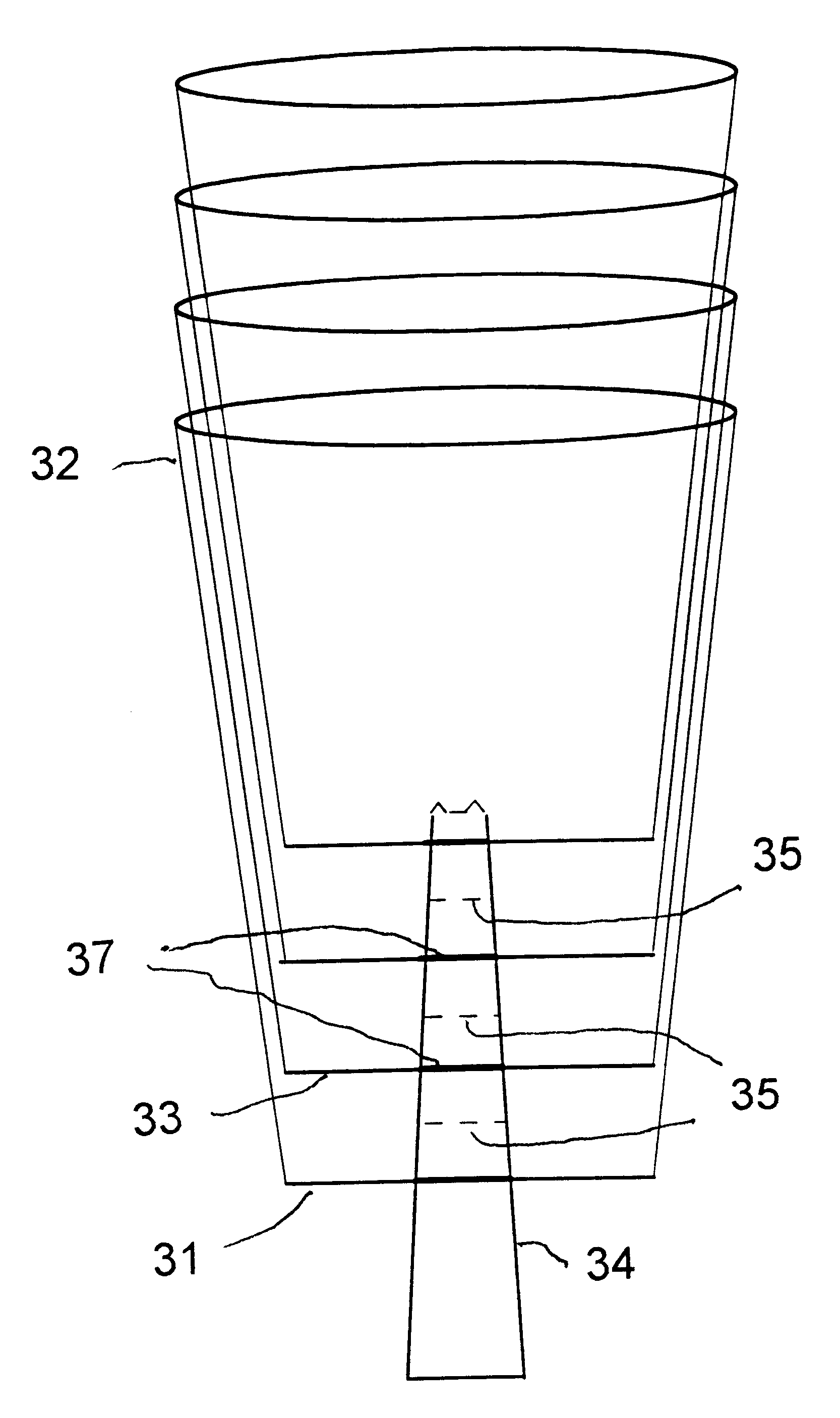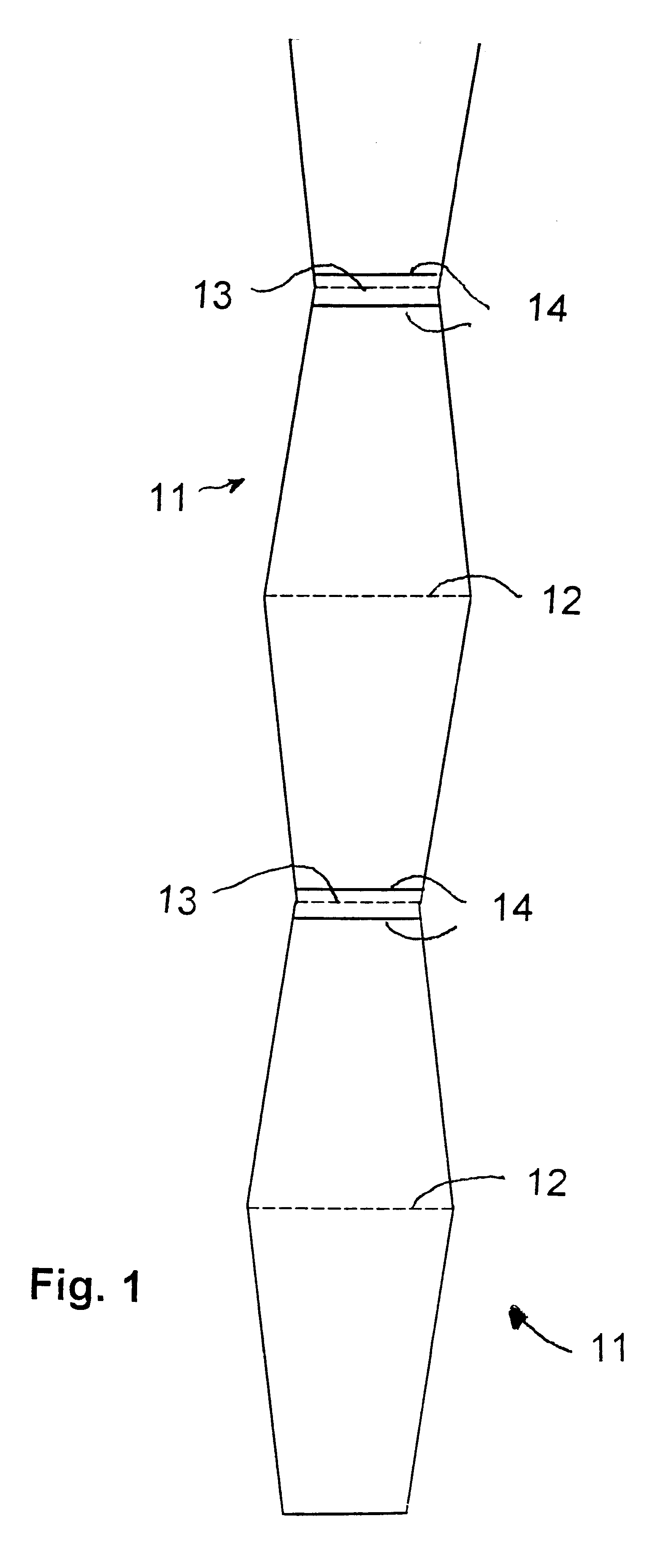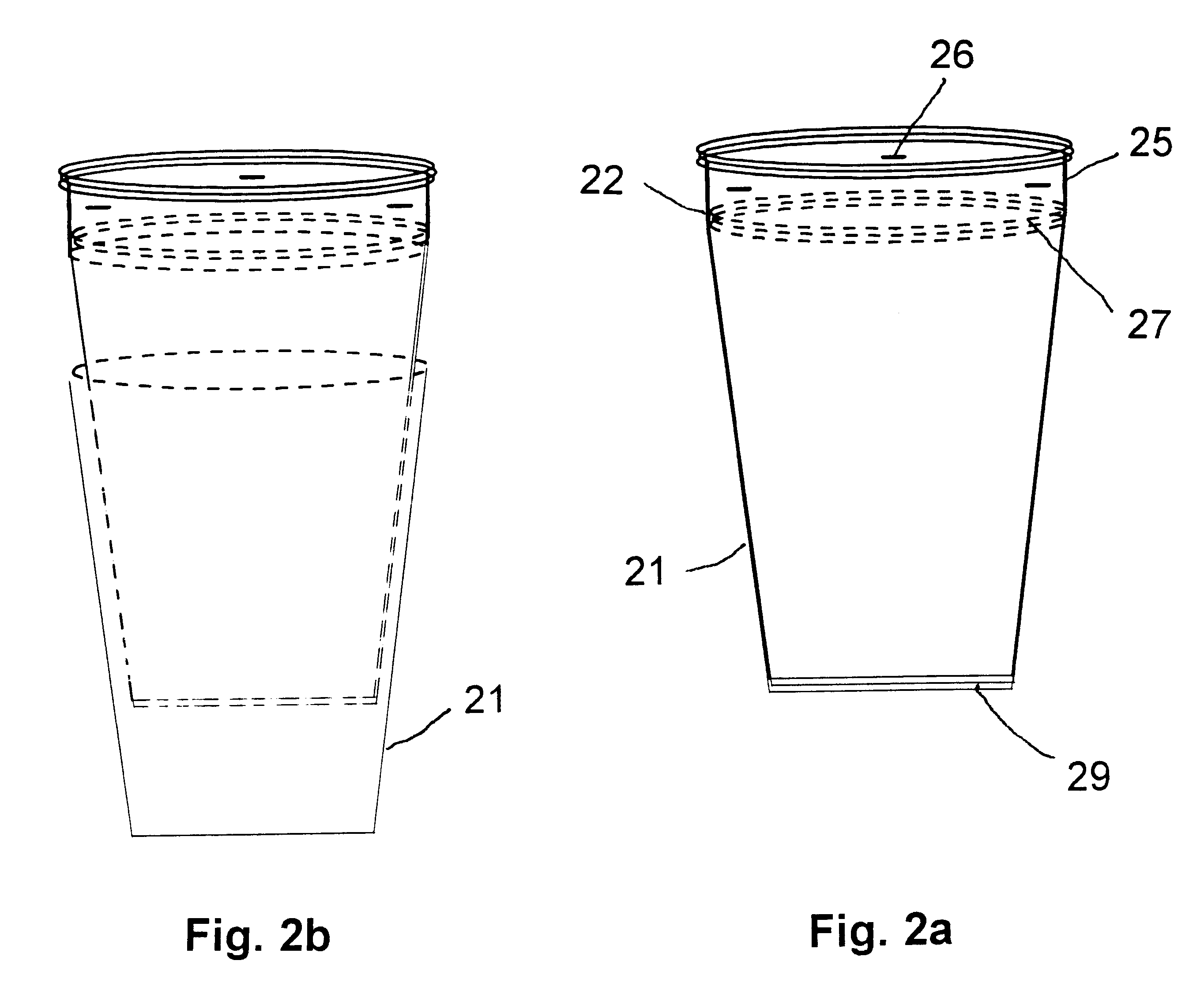Bag dispenser
a bag dispenser and bag technology, applied in the field of bag dispensers, can solve the problem of difficult opening of bags,
- Summary
- Abstract
- Description
- Claims
- Application Information
AI Technical Summary
Benefits of technology
Problems solved by technology
Method used
Image
Examples
first embodiment
The bag dispensers of this invention overcome the inconvenience of prior art bag dispensing means and methods in several ways. In a first embodiment, means are provided for dispensing bags, one at a time, comprising a roll of bags attached to one another along either their tops or bottoms. The top of a first bag is attached to the top of the second next adjacent bag, followed by the bottom of said second bag attached to the bottom of a third next adjacent bag, in a continual alternating fashion forming a roll wherein the width of the top-to-top connection is greater than the width of the bottom-to-bottom connection, and wherein the top connections between adjacent two bags each has a row of closely-spaced perforations, and wherein the bottom connections between two adjacent bags each has a seam closing each bag at its bottom end, and a row of closely-spaced perforations between the seams of adjacent bags, whereby a bag is separated from the roll by pulling and tearing along the row ...
second embodiment
In this invention, a plurality of tapered bags is nested, with one bag inside the next. The bags are tapered at both sides, such that they are narrower along their bottom edges and wider across their top edges. At their tops, they are each individually attached to strips which are circumferential extensions of the tops and which in turn are attached to each other by conventional means such as staples. Rows of closely-spaced perforations below the strips ensure that each bag is open when separated from the strips by pulling and tearing along the row of perforations.
With reference to FIG. 2a, tapered bags 21, each having a top opening 22 and a sealed bottom 29, nested with one bag inside the next, of which the openings 22 are removably attached to strips 25, which in turn are fastened to each other by staples 26. The strips 25 are extensions of bag openings 22 and have sufficient width to enable a stack of strips to be fastened together when assembled. Rows of perforations 27 adjacent...
third embodiment
In this invention, means are provided for dispensing bags, one at a time, comprising a plurality of bags, one nested within a next adjacent bag, and further comprising a central tab passing through said bags and being attached to a bottom seam of said bags, and transverse rows of perforations in the tab between adjacent points of attachment of the bags and the tab, and means for attaching the bags to the tab, and wherein a bag is separated from the tab by pulling and tearing along the row of perforations to provide a bag having an open top end and a closed bottom end.
With reference to FIG. 3, in this third embodiment of the invention, each tapered bag 31 is first manufactured as a tapered tube with the top 32 and bottom 33 of each tube open. A single central tab 34 of plastic, of a width that fits through the bottom 33, is perforated transversely at intervals to form rows of closely-spaced perforations 35 that are parallel to each other. The perforated central tab 34 is inserted thr...
PUM
 Login to View More
Login to View More Abstract
Description
Claims
Application Information
 Login to View More
Login to View More - R&D
- Intellectual Property
- Life Sciences
- Materials
- Tech Scout
- Unparalleled Data Quality
- Higher Quality Content
- 60% Fewer Hallucinations
Browse by: Latest US Patents, China's latest patents, Technical Efficacy Thesaurus, Application Domain, Technology Topic, Popular Technical Reports.
© 2025 PatSnap. All rights reserved.Legal|Privacy policy|Modern Slavery Act Transparency Statement|Sitemap|About US| Contact US: help@patsnap.com



